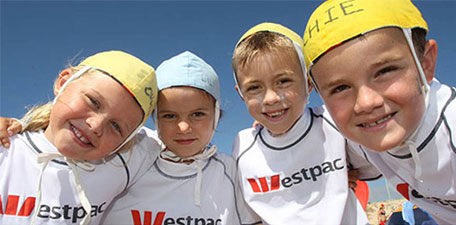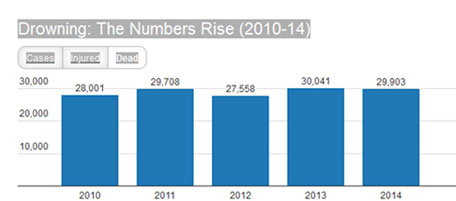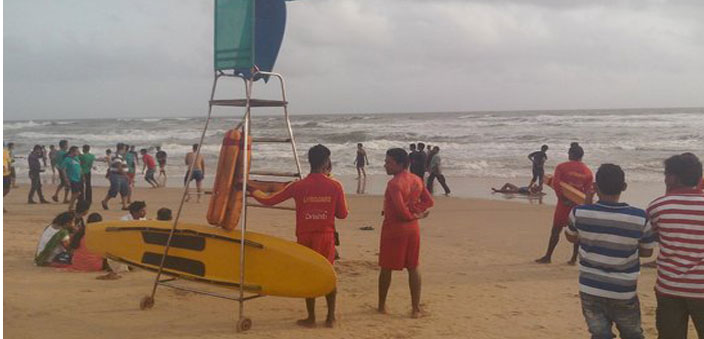As many as 30,000 people die in India due to drowning every year, which is said to be the second major cause of unnatural deaths in our country. Maharashtra tops the list with 4,822 drowning deaths in 2014, followed by Madhya Pradesh (4,299), Karnataka (2,162), Gujarat (2,116) and Tamil Nadu (1,899). These five states account for 51% of drowning cases across India. The shocking statistics (from a survey conducted by the National Crime Bureau Records), draw attention to the severe lack of safety mechanisms on our beaches.
India lacks a ‘beach policy’
India has many popular beaches which are frequented by revellers throughout the year. The footfalls are high, especially during weekends and public holidays. The survey shows that despite the fact that death due to drowning has been on the rise in the last decade, India does not have a beach policy to safeguard the lives of its citizens. After the tragic death of 14 students of a Pune college at Murud beach on February 1, 2016, the Maharashtra government had announced that it will draft a fresh policy and guidelines for beach safety, focusing on signage and information about dangerous spots on beaches. But not much headway has been made since then, and our beaches continue to be unsafe.

Having spent a year or so at Rashtriya Life Saving Society (India), an 18-year-old organisation which aims at equipping people in basic lifesaving techniques, we have come to realise that it is not that people do not want to acquire basic safety skills in and around water bodies, but they see it as an unproductive and less important skill. A large number of drowning accidents resulting in death are due to low awareness of safety. BLS (Basic Life Saving) skills should be made an integral part of the schooling system today. It seems to be more of a necessity than a need.
Drowning, a global killer
According to the World Health Organization’s, World Drowning Report 2016, drowning is the 3rd largest global killer in the world and claims more than 3,72,000 lives in a year. Multiple reasons have also been identified for the same, some of which include:
The India story
With a gigantic coastline of nearly 7,500 kilometers and multiple star properties, adventure facilities, water sports training institutes etc., set up across almost the entire coastal belt, safety should be of utmost concern in India. Unfortunately, it is the most neglected aspect. There are not enough lifeguards on our beaches, nor adequate equipment to tackle emergencies. Just because a person dons a lifesaving jacket does not mean he is safe from danger. We have to understand that a lifejacket is only a piece of equipment and not Sanjeevani booti which can restore life. To be conscious about what one is doing in and around water bodies is the first aspect of safe beaches. Second, there is a rigorous level of training required to be able to assist a person in case of an emergency, before any medical assistance arrives. We know this as First Aid. There is a lot more to it than tying bandage or using age-old grandma’s practices to heal wounds. An intense understanding of possible scenarios and probable actions are required to save lives, in and around water bodies.
Our beaches are unsafe
A harsh truth is that our beaches are anything but safe. In most places lifeguards are “trained” to become just cosmetic elements of a beach where there is footfall. There are very few beaches in India that can assure that their lifeguards are 100% trained to save lives in case of an accident. Many of our beaches are unmanned or do not have enough trained lifeguards transforming a day of fun and frolic into a nightmare if a drowning incident results in loss of life.
Mandates do not have to be drafted by authorities to emphasise and ensure that our beaches are safe. It’s all about putting humanity and some basic principles into practice. Though there is no fixed distance that a lifeguard should monitor, it is rather surprising that one lifeguard (LG) or two are expected to man a beach of about three kilometres. Considering a person is drowning about 800 metres inside the water and the current is pulling him; with two LGs at a distance of almost three km away from the victim, what are his chances of being rescued? We can do the math ourselves.
The loss of young lives in the water body drowning scenario in India is alarming as the below figures show. We lose over 30,000 youngsters to drowning almost every year. The figures could be much higher as many of the deaths due to drowning go unreported. (See graph)

Beach safety awareness is very low in India. People who do not know to swim venture into the sea, without knowing the topography or checking the time of high tide and low tide. They should be alert to the potential dangers. Talking to locals and checking on the danger spots is always helpful. It is imperative for each and every one of us to be empowered with basic lifesaving skills. We never know when we may have to use them. Appropriate and thoughtful assistance given to a victim in the ‘Platinum Period’ (15 minutes after the incident), can result in his survival until medics arrive and do their part.
Wisdom from the West
Our beaches can only be safe if we decide to keep them safe. We often compare ourselves and aspire to follow the lifestyle of the Western world. Let us begin by valuing life. Countries like Australia imbibe lifesaving skills in ‘Nippers’ (a junior activities programme for children between the age of 3 and 12) where the parents and local population volunteer. Everyone is a Lifeguard and all Nippers undergo training to be able to be safe and at the same time enjoy themselves in and around water. We must take our cue from them and work towards creating safe beaches.
Developing a healthy beach culture
At an administrative level I feel the government must draft stringent rules and regulations to be implemented across the Indian sub-continental belt with appropriate punishments for disregard of rules, to make our beaches safe. At the same time, all important safety equipment should be made mandatory at all beaches. This should include rescue tubes, ropes, foam boards, megaphones for warning, buoy rings, Inflatable Rubber Boats (IRBs), surf boards etc., and most important, a dedicated team of volunteers which is skillfully trained and empowered to save lives the right way. Safety signage at our beaches are sometimes in the most dilapidated condition. The signboards have to be clearly visible and at vantage points, which will act as a warning to revelers.
Many organisations have come forth in the recent past to ensure that a proper beach culture is developed across all the coastal states. This has to begin by building awareness about beach safety. Rashtriya Life Saving Society (India), an official branch of the Royal Life Saving Society, and a member of the International Life Saving Federation, has taken the lead to create a beach culture among many coastal states across India. Their projects like SwimNSurvive which are based upon the ethos of delivering water safety training to children between the age group of 10-16 years, have been quite successful. They have also trained over 10,000 children over the past eight years since the project implementation. Drishti, a lifeguarding and patrolling organisation in the state of Goa has its lifeguards spread across all its beaches with demarcations for safe and rough waters. The organisation has been playing an important role in ensuring beach safety. We need to learn from our mistakes, take a cue from developed countries, and make serious efforts to make our beaches safe and minimise loss of lives in and around water bodies.


 [/column]
[/column]